
Water News
Water2Drink Blog > Water NewsLife Isn't a MovieFriday, July 18, 2014 - Posted by Water2Drink, in Water News, Products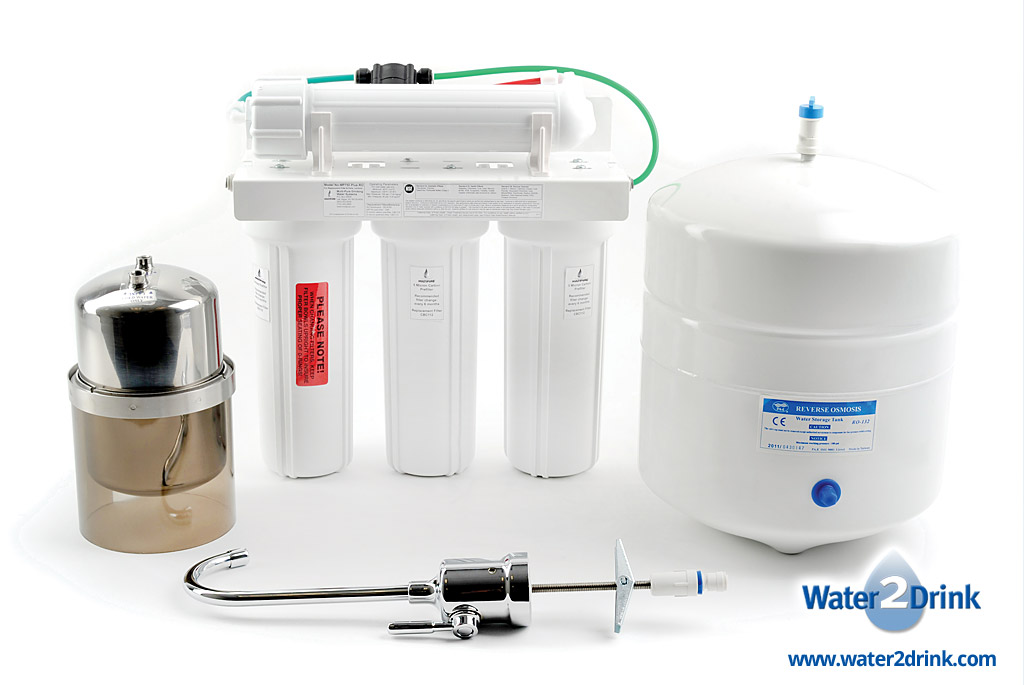
While Julia Roberts in the “Erin Brockovich” movie is able
to make sense of Chromium 6 chemical contamination in a small town’s water
source, life isn’t a movie for families who are affected by this issue. Fortunately for some, California has become
the first state to impose a limit on hexavalent chromium (also known as
Chromium 6). But what if you live with this issue (or another prevalent water
contamination source) and your state has not imposed limitations or
restrictions? The most effective drinking water filter solution for
consumers with very specific water contamination issues is the Multipure AquaRO
Reverse Osmosis System. It is an
ultrafiltration system that can remove contaminants such as barium, cadmium,
chromium (both hexavalent and trivalent), copper and dissolved solids (such as
sulphur, iron, calcium and magnesium), fluoride, nitrate and nitrite,
perchlorate, radium and selenium. But don’t just take our word for it. Multipure’s AquaRO system is performance tested
and certified by NSF International to NSF/ANSI Standards 42 (Aesthetic
Effects), 53 (Health Effects), and 58 (Reverse Osmosis). This five-stage water filtration system
produces fresh, clean drinking water for an average operating cost of just 29
cents per gallon! If you want to know
more about what components make up the Multipure AquaRO, view this video about “What’s
In the Box?” If you have a specific water contamination issue, contact
Water2Drink.com to find out how you can reduce your exposure to toxins. We can help you pinpoint the water filtration
system that will meet your needs and your budget. |
 0 Comments 0 CommentsTweet |
Three Reasons to Skip Bottled WaterFriday, July 11, 2014 - Posted by Water2Drink, in Water News, Products, Water Safety The bottled water industry has exploded over the last
decade. The effectiveness of the bottled
water marketing campaigns has led the general public to believe buying their
product is the safer, more convenient way to consume purified water. But you
can’t believe all the marketing hype. Thanks
to the Environmental Working Group (EWG), here are some reasons to skip bottled
water and find another solution. 1. 1. What’s in
the Bottle? No, not the contents, but within the plastic used to make the
bottle. The FDA has disclosed which chemicals are used to make PET plastic
(marked with a #1 code), but do you know how many chemicals may be leaching
into the water? An EWG investigation
found these plastics contain “dozens of chemical additives, manufacturing impurities
and breakdown byproducts – a total of more than 80 potential contaminants that
can leach into the water.” 2. 2. What’s in
the Water? In 2008, the EWG found 38 pollutants in 10 brands of bottled
water. The bottled water industry, unlike water utility companies, rarely
discloses the results of contamination testing on its product. Yet they claim that bottled water is as safe
as tap water. “Given the industry’s refusal to make available data to support
its claims, consumers have little reason to be confident in the purity of
bottled water,” says the EWG. 3. 3. Plastic
Pollution. As consumption continues
to rise, the U.S. Environmental Protection Agency estimates that only 29% of
plastic bottles were recycled in 2011. This leaves 71% of plastic pollution to pollute waterways,
clog landfills, and threaten marine life.
So what is the solution? Filter your tap water and use a
reusable bottle. There is a wide range
of water filtration products to fit every budget and each water concern. A Multipure solid carbon filter, tested and
certified to NSF/ANSI standards, provides consumers superior water filtration
to deliver healthier water. At Water2Drink.com, we can provide you with
affordable, effective alternatives to bottled water. Our Resource Center has product information,
performance data and warranty information to help you select the most effective
water filter to fit your needs. Call or visit us online today to explore the
hidden costs of bottled water. |
 0 Comments 0 CommentsTweet |
Making Your Drinking Water Safe in an EmergencyFriday, July 4, 2014 - Posted by Water2Drink, in Water News, Products, Water Safety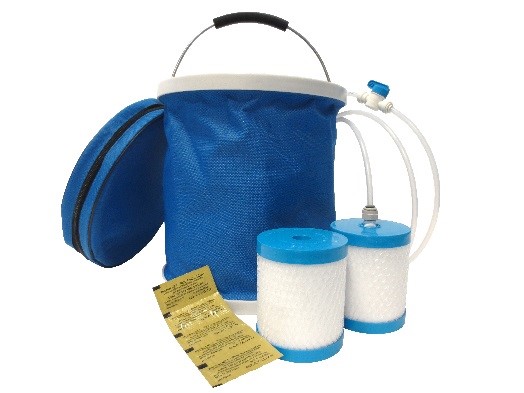
Oh, no! Your community just issued a boil water alert due to
a water main break, and the authorities don’t know how long it will last. What will
you do to protect your family?
If you own a Multipure Water Emergency Treatment (WET) System,
the answer is relatively simple: treat and filter your tap water to make it
safe to drink. The WET System comes with everything you will need to produce safe,
clean drinking water. Here’s how it works:
1. 1. Fill the collapsible bucket included in the WET
System with tap water to the designated level.
2. 2. Add the disinfection tablets that are included
in the WET system, stir until dissolved, and then let the water stand for a few
minutes.
3. 3. Screw the provided plastic fitting into one of
the two Multipure EF8 emergency carbon block filters included in the WET System.
4. 4. Attach to the fitting the plastic tubing provided
in the WET System, and make sure the shutoff valve on the plastic tubing is
closed.
5. 5. Place the bucket on a tabletop or other raised
surface and put the EF8 filter inside the bucket, letting the other end of the
plastic tubing extend well below the bucket.
6. 6. Place the open end of the plastic tubing into a
suitable container to collect filtered water.
7. 7. Let the filter soak for a few minutes and then
open the shutoff valve on the plastic tubing.
8. 8. Let gravity pressure do the rest. In very little
time, fresh clean water will begin flowing through the EF8 filter and out the plastic
tubing into the drinking water container.
9. 9. When the source water bucket is empty, refill
and repeat the process as often as needed until safe water service has been
restored.
The WET System becomes your backup drinking water source in
case of emergency. The Multipure WET System requires no electricity, hand
tools, or anything else except water. Everything you will need is included in
the kit.
How do you obtain a Multipure WET System? This product
currently is not offered for sale, however, it’s available for FREE when you
purchase a new Multipure
Drinking Water System for your home or office. Click here
for more information about this limited time offer, available from Water2Drink.com.
Prepare now, and be
ready when a water emergency strikes in your neighborhood!
|
 0 Comments 0 CommentsTweet |
The Heat Is On!Monday, June 30, 2014 - Posted by Water2Drink, in Health, Water News
Now that we
are in the heat of summer, many people think that consuming sports or energy drinks
will provide replacement electrolytes and nutrients lost through sweating or
sports activities. In fact, these drinks
are extremely high in sugar and are particularly marketed within sporting
events. For example, among sponsors of
the World Cup currently being held in #Brazil, Coca Cola is an official
corporate partner of #FIFA, and McDonald’s is an official sponsor of the #WorldCup. Marketing messaging
gives the impression that these drinks, though high in sugar, could support an
active, healthy lifestyle. As with other
health products, you should educate yourself on the content of these drinks,
and the effect sugar consumption has on the body. Some of the energy drinks contain between 60
and 70 grams of #sugar in a single bottle.
Additionally,
research shows that liquid calories are known to be less satiating than solid
calories and fill you up less. This can
set up a cycle of overindulging on sugary beverages as the body searches for
nutrients and hydration.
Unless you
are an elite athlete, the best hydrating beverage for the body is fresh,
filtered water. Replacing sugary drinks
with water reduces your sugar intake and cuts your risk of obesity, high blood
pressure and diabetes. Consider the
critical role water plays in your body, and find out here how much water your
body needs for digestion, body temperature regulation, and other important
functions. |
 0 Comments 0 CommentsTweet |
Drink Water for Life!Friday, June 20, 2014 - Posted by Water2Drink, in Health, Water News
Do
you realize just how important drinking water is to the efficient functioning
of a healthy human body? It is estimated that your body consists of 60% to 75%
water. So much of your health and how you feel is related to the quality and
quantity of water you consume. Listen to Deanna DeLong, a self-proclaimed
“water advocate,” present the “Drink Water For Life” story in a highly
informative YouTube video that outlines the virtues of drinking enough
water.
You
can view the video by clicking on this link: www.youtube.com/watch?v=833lbjUejFM
|
 1 Comments 1 CommentsTweet |
The Final BarrierMonday, June 2, 2014 - Posted by Water2Drink, in Water News, Water Safety
You may
believe that the water coming out of your tap is safe to drink, especially if
you live in or near a metropolitan area with water supplied by a municipal
treatment facility. But it may not be as
safe as you think. There are
numerous potential points of failure between the treatment facility and your
water glass. The Water Quality
Association has provided information on how to Protect Your Family that describes
the “Final Barrier” concept.
The best way
to control the quality of your water is by using what is known as a Final
Barrier Solution, such as a quality drinking water filtration system. Installed at the point of use (typically,
your kitchen sink), a high-performance, low maintenance water filtration system
will provide you peace of mind. This is the #finalbarrier between the municipal
delivery system and your water glass.
But not all
water filtration systems are equal. The
water quality is improved only if you can identify the contaminants that are
present in your #water, and you have the ability to certify that these
contaminants are reduced or eliminated. The simplest way to provide such verification
is if the filter has been submitted for independent performance testing and
certification, such as that provided by NSF International.
The #Multipure line of drinking water filtration systems have all been NSF tested
and certified. In this era of
transparency, Water2Drink.com provides Product Performance information so you
can understand the product design and determine which filter is right for your
home.
You can
build your Final Barrier with information, education, and a certified Multipure
Water Filtration System from Water2Drink.
Please contact us if you need assistance in determining your needs.
|
 0 Comments 0 CommentsTweet |
Breast Cancer and YouFriday, May 23, 2014 - Posted by Water2Drink, in Health, Water News
In our modern world, we are surrounded by chemicals and
substances that are commonly used in everyday life. Unfortunately, many common
chemicals we encounter have been found to be carcinogenic and are linked to
cancer, specifically breast cancer. A new study published in the Environmental Health
Perspectives peer-reviewed journal identifies 17 groups of #chemicals that are linked
to breast cancer. These include benzene
and butadiene (found in vehicle exhaust, tobacco smoke, or charred food),
methylene chloride (found in cleaning solvents), flame retardants (found in
treated furniture or rugs), stain-resistant textiles (found in furniture
upholstery), and disinfection byproducts (found in drinking water). Silent Spring, an organization dedicated to identifying and
breaking the links between environmental chemicals and #breastcancer, provides a
list of seven tips you can follow to reduce or eliminate your exposure to
breast carcinogens. #SilentSpring
believes that while science is still discovering how these chemicals affect our
health and our lives, these tips provide actions you can take to begin reducing
your exposure now. #Water2Drink is in full alignment with Multipure’s core
belief of better water for better health. For over forty years, Multipure has produced
the best water filters and water treatment devices in the market. Their solid carbon block technology is
independently tested and certified by #NSF International, and are proven to
reduce many contaminants listed in this study and much more. You can view the Performance Data Sheets that
list the certified reduction of contaminants for all of our products on our
website. A
Multipure solid carbon block Drinking Water System can really make a difference
in the life and health of you and your loved ones. Please contact Water2Drink.com if you have
questions regarding which filter is right for you! |
 0 Comments 0 CommentsTweet |
Take the Multipure Challenge!Monday, May 19, 2014 - Posted by Water2Drink, in Water News, Products
Are you concerned about the quality and safety of the water
you ingest? Tired of buying expensive
bottled water? Unsure of the source of
your bottled water? Concerned about the amount of plastic water bottles in the
environment? If you said yes to any of
these questions, you may be ready to consider buying a water filtration system
for your home or office. As you begin your research into point-of-use water
filtration, #Water2Drink.com is pleased to provide a new resource that will help
you decide which #waterfilter is right for you.
We maintain a Resource Center that contains product performance data,
health information and useful tips that will help you choose the proper filter
for your needs. Recently, we added a new
checklist, “Take the Multipure Challenge,” that can serve as a reference for comparing
Multipure solid carbon block filter systems to other water filtration
technologies.
Not all filters are equal, and Multipure International is an
industry leader in the water filtration market.
The #Multipure water filters with their superior performance are backed
by independent #NSF International testing and certification, and have been
cited as superior products by Consumer Reports and Consumer’s Digest magazines. In addition, Multipure has a 44 year history
of leveraging its extensive research and development expertise to produce a
truly superior solid carbon block water filter. |
 0 Comments 0 CommentsTweet |
Get The Lead Out!Friday, May 9, 2014 - Posted by Water2Drink, in Water News, Water Safety
In 2011, the Federal Government enacted the “Reduction of
Lead in Drinking Water Act.” This law went into effect on January 4, 2014. The idea behind the act was to amend the Safe
Drinking Water Act regarding the use of metal fixtures, fittings, pipes, and
other metal components, in order to clarify the "lead free” requirements of plumbing
components. Here’s the Great News:
Multipure’s Drinking Water Systems are in full compliance. #Multipure products are certified for material
safety by NSF International when they are rigorously tested under the NSF/ANSI
Standard 42 testing protocol, and this certification extends to #lead content. As an educated consumer, you need to be aware that all of
the system components that Multipure provides with its’ systems should be
utilized for the installation of your water filtration system. By substituting non-compliant hardware when
making repairs or changes, a consumer could negate the certification testing
provided by the #NSF/ANSI testing protocol. Some consumers believe plastic
fittings are inferior to metal fittings, but that is not the case, particularly
when it comes to leaching harmful contaminants into drinking water. We’ve provided a link to a summary of the Act here. In particular, we recommend you specifically
read the “Frequently Asked Questions” section, which addresses questions raised
by the manufacturing and usage of certain plumbing components that may be used
in your home or office. You can also
find more information about lead in drinking water at the EPA’s website, or by
visiting the #Water2Drink Resource Center to learn how a Multipure Water Filter
works.
|
 1 Comments 1 CommentsTweet |
Celebrate National Drinking Water Week! May 4 - 10Friday, May 2, 2014 - Posted by Water2Drink, in Water News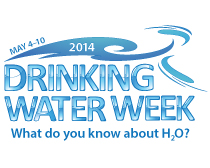
#Holidays are almost a national pastime in this
country. There are the typical national
holidays: New Year’s Day, Independence
Day, Columbus Day. There are the card-industry holidays: Valentine’s Day, Mother’s Day, Halloween. And there are some truly bizarre and unique
holidays too! There is Trivia Day (January 4th), Star Wars Day (May
4th), National Garden Week (June 1-7), and National Peanut Day
(September 13th). One celebration you will want to observe is National Drinking
Water Week! In 1988, the American Water
Works Association brought this event to the attention of the US Government, and
formed a coalition with other associations and the Environmental Protection
Agency (#EPA). This year it falls May 4th
through May 10th. Not only do
you want to drink fresh, clean water, you may want to learn how to protect your
drinking water for life. You may want to
know which states participate in the Drinking Water Watch, which is information
about regulated water systems available online from some state agencies. In honor of #NationalDrinkingWaterWeek, the EPA has recently
posted information and links to more resources to enable consumers to become
more educated about source water protection.
|
 0 Comments 0 CommentsTweet |
Open or Closed? Reservoirs, That IsFriday, April 18, 2014 - Posted by Water2Drink, in Water News, Water Safety
Headlines
this week report a young man in #Portland, Oregon was arrested for urinating through
a fence into the #MountTabor Reservoir #5.
Additionally, two other men tried to scale the fence, and one of those
men actually entered the water. While it
might seem like a harmless prank, the city decided to drain the reservoir – all
38 million gallons – because of the type of reservoir. This reservoir, one of five in Portland, is
an open reservoir that holds water that already has been treated and flows
directly into the water mains to customers. You may agree
with the city regarding the dumping of this treated water or you may not. But with an open reservoir, the possibilities
for contamination are endless. Urine
(either human or animal), surrounding land use run off, animal carcasses, or
algal growth may all contribute to reservoir contamination. |
 0 Comments 0 CommentsTweet |
New Findings about Arsenic and IntelligenceFriday, April 4, 2014 - Posted by Water2Drink, in Health, Water News
Arsenic, a naturally occurring, tasteless and odorless
metalloid, is recognized by most consumers to be a toxic carcinogen. Arsenic can exist in many inorganic and
organic compounds as well, and researchers and regulators agree that inorganic
arsenic is more of a risk than the organic forms prevalent in the diet. Recently, a study of 272 Maine
schoolchildren might reveal a breakthrough about whether arsenic exposure, even
at low levels, could also lead to reduced intelligence. This five year study conducted by scientists
from Columbia University and the University of New Hampshire showed that even
at low levels, arsenic in drinking water could correlate to as much as 5 or 6
lowered points on IQ tests. “It is the
first study to actually show a difference in IQ points in the U.S. based on
water arsenic levels,” says Prof. Gail Wasserman of Columbia University.
Laboratory testing is available to identify arsenic levels
in your water source. The first place to start would be with your local water
authority. You can also reference the Environmental
Working Group National Drinking Water Database, where you can type in your zip
code and learn more about your local water source.
Multipure Drinking Water Systems have been certified by NSF
International to reduce the widest range of contaminants of health concern.
Multipure’s Aquaperform (MP880) units have been certified by NSF International,
under Standard 53, to reduce Arsenic V.
For more facts about arsenic, click here to see more information on
Water2Drink.com. If you are not sure of
which system you may need, please contact us for assistance in selecting the
one that best suits your needs.
|
 0 Comments 0 CommentsTweet |
Accept No Imitations!Thursday, March 27, 2014 - Posted by Water2Drink, in Water News, Products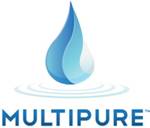
A recent letter from Zachary Rice, President of Multipure
International addresses the importance of buying genuine Multipure replacement
filters: “March, 2014 I have recently heard growing concerns
regarding imitation carbon block filters that are “Multipure compatible”. As we
all know, the water filtration industry is full of incredible potential. There
have always been competing products on the market as well as “knock-offs”
attempting to capitalize on Multipure’s superior products. However, with an
increasing number of companies entering this expanding market, and with the
ease of finding products in today’s information age, these products are more
prevalent and visible than ever.
The simple fact remains that these products are
inferior to Multipure’s certified products. In the end, there are two
options a consumer faces when selecting a drinking water filter for themselves
and their family. The first option is to choose
a Multipure product with broad performance certifications, superior
capabilities, and exceptional quality backed by a lifetime warranty. The second
option is to choose a product without these assurances. Simply review the fine
print, the list of performance claims, and the information available on the
options, and the answer will be as clear as a glass of Multipure water.
Let me provide an example. The CB6 cartridge is
NSF
certified for 67 contaminants, most of which are health concern contaminants
including Lead, VOCs, PCBs, MTBE, and Cysts. An available “knock-off” cartridge
is certified for nothing and adds the following disclaimer: “If you know that
tap water contains a chemical contaminant of health effect, then you may want
to install a specialty filter to remove the contaminant of concern before water
enters this filter.”
If your customer insists on purchasing a
knock-off filter, please have them take the advice of the competition and put a
CB6
filter in place before the knock-off cartridge. My advice would be to save
themselves the frustration, risk, and cost of an inferior product, and just
stick with a product we all have confidence in: Multipure.
Sincerely, Zachary Rice
#noimitations #Multipure #NSFcertified |
 0 Comments 0 CommentsTweet |
Where's The Water?Friday, March 21, 2014 - Posted by Water2Drink, in Water News, Water Safety
Everyone knows of the lack of water in arid areas like Los
Angeles, CA and Las Vegas, NV. But what about Lincoln, NE? Cleveland, OH? Miami,
FL? Washington, DC? San Antonio, TX? If you didn’t think these cities would be
at risk for water availability, you might be surprised. All of these cities are on the list of 11 US
cities that have dramatically higher water usage than replenishment, according
to NOAA’s Cooperative Institute for Research in Environmental Sciences (CIRES)
2013 study. A recent article in the online magazine Water Conditioning & Purification (January 2014) outlines the
global supply and demand and how these cities suffer the effects of their water
demands. Only a small fraction of the
water used in the US (0.4 percent) is used for drinking. Flushing toilets account for 27 gallons per
person per day! While we may want to
believe that fresh clean water will always be available, many deficiencies in
our water supply may be disguised in at-risk areas. “Water-stressed regions frequently suffer from multiple
economic and public health adversities, including food and water quality
issues,” states the wpconline.com article.
Many water-stressed cities receive their water from locations that are
many miles away, and it may travel in open canals or waterways that are subject
to many levels of contamination. The Huffington Post also wrote about the risks for these 11
cities, citing the CIRES report and additional sources. If you live near or in these cities, you may
want to begin looking at your water usage.
For the health and safety of yourself and loved ones, consider using a
point-of-use water filtration system to ensure the quality of the water in your
home. You may want to begin talking to
your neighbors about what conservation efforts may be in place in your
area. It is going to take awareness and
action by all of us to change the trajectory of these vulnerable cities. #Miami #WashingtonDC #SanAntonio #SaltLakeCity #Lincoln #Atlanta #SanFrancisco #ElPaso #Houston #Cleveland |
 0 Comments 0 CommentsTweet |
Let It Rain!Friday, February 28, 2014 - Posted by Water2Drink, in Water News, Products, Water Safety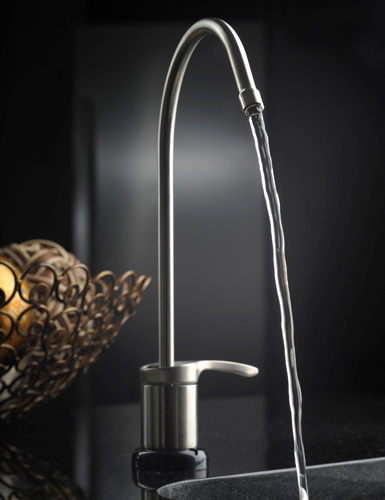
Finally, some good news! This weekend’s forecast for most of
California calls for heavy rain and snow over most of the state. While this is very
welcome news for the drought-stricken Golden State, it may also create flooding and
debris flows. Rain runoff and flooding
pose the potential for elevated levels of contaminants ending up in the surface
and ground waters that are the source of residential drinking water. For these reasons, it’s important to have a fresh, high
quality water filter available that will strip contaminants from your water
source. Water2Drink.com sells only the highest quality Multipure drinking water filtration systems that are NSF-certified and have a
lifetime warranty from the manufacturer.
If you are unsure of what contaminants are reduced by a
Multipure drinking water system, you can check out the NSF certifications list
on our website by clicking here. |
 0 Comments 0 CommentsTweet |
Gambling With Your Health?Friday, February 21, 2014 - Posted by Water2Drink, in Water News, Water Safety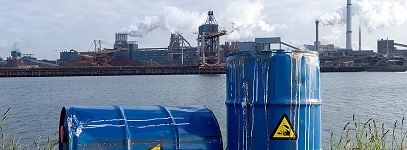
A major chemical spill in Charleston, WV. A coal ash spill
in Virginia and North Carolina. A dike failure in Tennessee. Flooded farms that
spread fecal matter and fertilizers. Ongoing droughts. And every day, the
nation adds to the chronic, ongoing pollution of its drinking water with PPCPs
(pharmaceuticals and personal care products).
While your water source may be safe today, are these events gambling
with your health? National Geographic, one of the nation’s most trusted
sources for educational information, wrote a thought-provoking article that outlines the severity of these occurrences. All of the above events have happened within the United States
in the past decade alone. While the
majority of water treatment facilities are safe, it only takes an accidental leak
such as the January 2014 MCHM chemical spill in Charleston to overwhelm the
treatment facility. A coal ash contamination
may be even worse, such as the 2008 Tennessee dike failure and the 2000 Kentucky
pond failure. Coal ash contains heavy metals,
arsenic, thallium, and other dangerous toxins.
Not only do these events immediately impact the environment (such as
contaminating a nearby waterway), there is also lingering toxicity in the soil
and nearby freshwater and groundwater sources. Even the nation’s aging water transportation infrastructure
adds to the problem. “In the
American Society of Civil Engineers 2013 Report Card for America's
Infrastructure, the nation's drinking water infrastructure was given a D grade
for aging pipes, some of which date back to the Civil War. ‘At the dawn of the
21st century, much of our drinking water infrastructure is nearing the end of
its useful life,’" states the National Geographic article. There is something you can do to ensure you and your family
are protected. Educate yourself on the water quality being delivered to your
home. Start by looking at the National Tap Water Quality Database. Contact your local water authority and request
a copy of your local water report. Use an NSF-Certified point-of-use water filtration system like the Multipure family of products. You CAN beat the odds and
protect your home against unexpected water contamination threats. #CharlestonWV #CoalAshSpill |
 0 Comments 0 CommentsTweet |
Twice Is Nice!Thursday, February 13, 2014 - Posted by Water2Drink, in Water News
Water2Drink.com is proud to announce that not only we have
been awarded the Millennium Award (announced in November, 2013), we have been
named the 2014 Sales Team of the Year! The announcement reads, “Each year, Multipure recognizes Distributors
for their exceptional dedication and effort in their Multipure businesses.
Multipure’s National Awards serve as a formal acknowledgement of this success
and entrepreneurship. We would like to congratulate the following Distributors
for demonstrating superior ability in key aspects of Distributorship, from
recruiting, to product sales, to network growth:
2014 Sales Team of the Year – Water2Drink”
The photo above is Multipure’s President
Zachary Rice, along with Executive Vice President, Jennifer Rice, awarding both
the Millennium Award and the 2014 Sales Team of the Year Award to Water2Drink.
At Water2Drink,
we’d like to thank you, our Customers, for trusting us with your health, and
the health of your loved ones. It is our
personal mission to provide you with the absolute best in Multipure products,
product performance, and our own personalized customer service. Our recognition is a direct reflection of the
relationship we have developed with you, our loyal Customers, over the past 10
years. We look forward to continuing to provide you many more years of
outstanding customer service. Visit www.Water2Drink.com to see why we are once
again “Sales Team of the Year”! |
 0 Comments 0 CommentsTweet |
Fouling the Waters?Tuesday, February 4, 2014 - Posted by Water2Drink, in Water News, Water Safety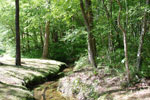
There can be political divide in Washington, D.C., but when
a gas-drilling operation threatens the waters of the nation’s capital, it is a
good sign to see citizens, water utilities, and federal agencies working
together to understand the risks involved. Recently, in a WashingtonPost.com column by Robert McCartney
(read it here),
it is reported that the gas industry is pursuing the gas drilling method known
as “fracking” in the George Washington National Forest. This forest includes the Appalachian
Mountains where the headwaters of the Potomac River are located. However, local water utilities, local cities
and counties near the forest, the Environmental Protection Agency, and citizens
are suggesting a decision be delayed until the release of a major study on the
effects of fracking by the EPA. If you believe this is just another problem within the political
halls of D.C., or an “inside the Beltway” issue, consider that the decision
reached about fracking in National Forests may impact the future of other
national forests. The George Washington National
Forest is near to adopting a new 15-year management plan, which may affect
decisions made in other national forests throughout the country. Awareness and involvement is key. Seek out information regarding fracking near
your water source, and get involved in local efforts that support your
position. If you are or could be affected by fracking, you can protect yourself
and your loved ones by using an effective point-of-use water filtration system,
like the ones listed here. #fracking #GeorgeWashingtonNationalForest #PotomacRiver |
 0 Comments 0 CommentsTweet |
Multipure and 4-Methylcyclohexane MethanolTuesday, January 21, 2014 - Posted by Water2Drink, in Health, Water News, Water Safety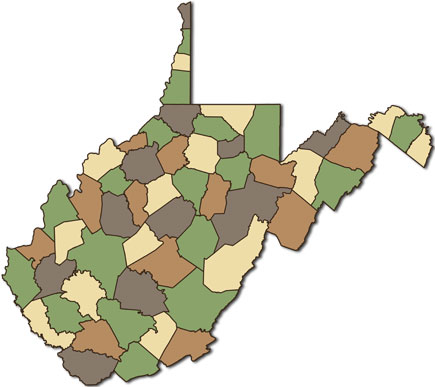 People everywhere are stunned to learn about the recent water pollution disaster in West Virginia. How could this happen? We all know that accidents happen, but with better oversight they often could have been avoided. But what about the unfortunate citizens of West Virginia who were directly affected by the toxic spill of 4-Methylcyclohexane Methanol into their water supply? What now? Water2Drink's customers who are using or considering purchasing a Multipure Drinking Water Systems want to know if they can use their Multipure water filter to help address this extraordinary water contamination problem. When asked this question, Multipure's resident expert, Multipure VP of Technical Services, Andrew Fenwick, PhD, offered the following comments: "We do not specifically test for the reduction of 4-Methylcyclohexane Methanol. It is not an organic compound included by NSF VOC surrogate testing, nor is there a reduction standard/protocol included in NSF Standards 42 or 53. With that said, based on the chemical nature of 4-Methylcyclohexane Methanol and results of past VOC testing, I expect that these filters would be effective at reducing the concentration of 4-Methylcyclohexane Methanol in drinking water (along with innumerous other analogous organic contaminants). We are unable to quantify the reduction efficiency or longevity/lifetime, as these characteristics depend on the concentration of the compound in the influent water, the water chemistry (TOC, pH, TDS, etc.), and the compound’s unique reduction characteristics (i.e., its affinity for the filter media). "But please note that, more than usual for topics like this, and based on the context of the question, I strongly caution the use of carbon block filters based on 'the concentration of the compound in the influent water.' These filters are highly effective at reducing numerous organic contaminants, but typically these contaminants are present in ppb (ug/L) concentrations. Higher concentrations (high ppb to ppm; i.e., high ug/L to mg/L) or above potentially suffer two ill-effects: inadequate contact time (more contaminant needs more contact with the filter media) and inadequate capacity (with adsorption technology, there is a limit to the amount of active sites before the filters become saturated/exhausted). Without knowing the concentration (or range in concentrations), I would not recommend the use of these filters as the primary treatment method. After primary treatment/remediation has taken place, I think these filters are an excellent technology to ensure reduction of residual 4-Methylcyclohexane Methanol in the distribution system and provide cleaner water for the long term." For more information on the contaminant reduction capabilities of Multipure Drinking Water Systems, please visit https://www.water2drink.com/resource-center/how-it-works-multipure-water-contaminant-reduction.asp.
|
 0 Comments 0 CommentsTweet |
How Good Are Your Pipes?Friday, November 8, 2013, in Water News, Water Safety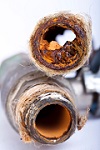 In focusing on the improvement of your drinking water, an
often overlooked topic is the condition of your water supply distribution
system. Most cities had their greatest
population growth and infrastructure expansions during the late 1800’s, around
World War I, through the 1920’s, and post-World War II. The materials, lifespan, and even the manufacturing
processes of the pipes laid during these times, all affect the quality of the
water delivered to your home today. The Water Science and Technology Board released their first
report of The Committee
on Public Water Supply Distribution Systems: Assessing and Reducing Risks
in 2005, which studied the public water supply distribution systems and their
potential risks. Since the report was requested by the EPA, it was written toward
a more governmental perspective. However, we feel our customers should begin to
learn more about our aging water distribution infrastructure, specifically by
reading Section
2, Trends Relevant to the Deterioration of Drinking Water in Distribution
Systems. Understanding the potential
problems can lead you to make a more educated decision about taking personal
control of your water filtration choice. |
 0 Comments 0 CommentsTweet |


